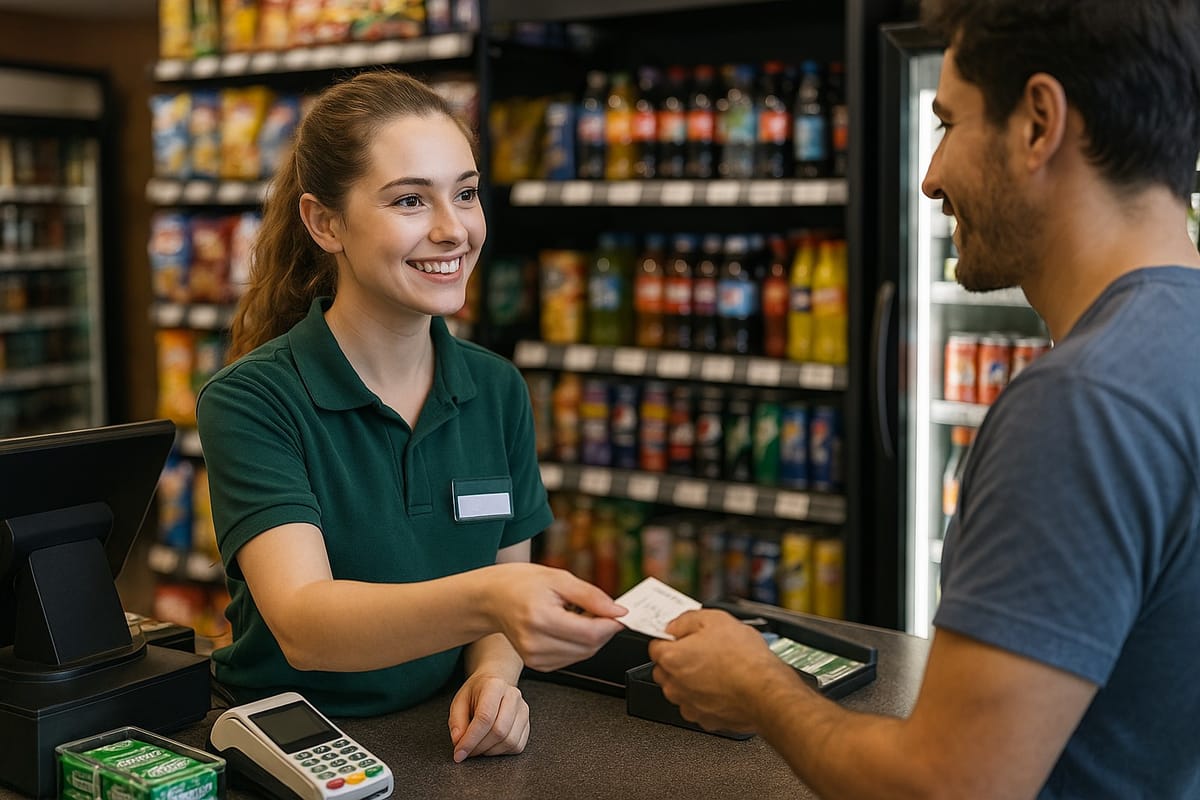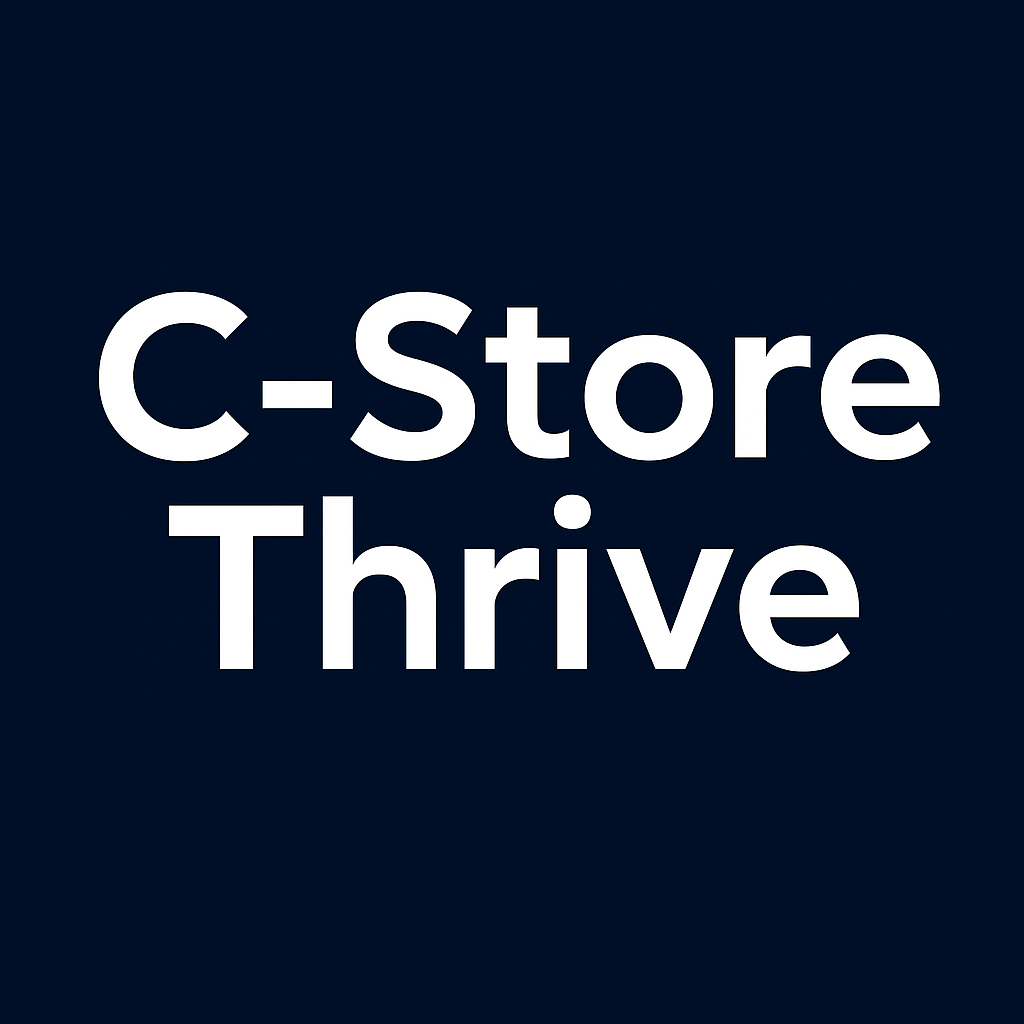
Tommy Rodriguez never thought he'd become the kind of cashier customers actually looked forward to seeing. When he started at Survival Stop six months ago, his manager told him to "just ring people up and keep the line moving." Pretty simple stuff, right? Scan, bag, take payment, next customer.
But something clicked during his third week when Mrs. Patterson, a regular who came in every morning for her coffee and newspaper, mentioned she was having trouble finding sugar-free creamer. Instead of just nodding and moving on, Tommy made a mental note. The next day, he'd stocked a few sugar-free options right by the coffee station and casually mentioned them when she came in.
"Oh my goodness, you remembered!" she said, genuinely surprised. That moment changed everything for Tommy—and for his store's bottom line. He'd discovered that turning simple transactions into real conversations wasn't just nice customer service—it was smart business.
The Magic Happens Between "Hello" and "Have a Nice Day"
Most sales associates think customer engagement is about being friendly and polite. And sure, that's part of it. But the real magic happens when associates figure out how to make each customer feel like they're the most important person who walked through that door today.
Research from the Retail Customer Experience Institute shows that customers who feel personally connected to store staff spend 23% more per visit and are 67% more likely to become regular customers. For convenience stores, where competition sits on every corner, those numbers can make the difference between thriving and just surviving.
"I used to think my job was just processing transactions," admits Sarah Kim, who works the evening shift at a busy urban location. "Then I started actually talking to people—asking about their day, remembering their usual orders, making little jokes. Now, I've got customers who specifically time their visits for when I'm working. My manager says our evening sales are up 18% since I started really engaging with people."
Remembering the Little Things That Matter Big
The human brain is wired to notice when someone pays attention. In a world where most interactions feel automated and impersonal, associates who remember customer preferences create moments that stick.
It doesn't have to be complicated. Danny Walsh, who's worked at Survival Stop for three years, keeps mental notes about his regulars:
- The construction worker who always buys two energy drinks and a banana around 6 AM
- The nurse who needs decaf coffee because she works night shifts
- The teenager who's saving up for a car and always counts exact change
- The elderly gentleman who prefers his lottery tickets from the middle of the roll
"When I see that construction guy walking in, I'll have his energy drinks ready before he even asks," Danny explains. "Takes two seconds off his transaction, but he lights up every time. Last month, he brought his whole crew in during lunch break because he'd been telling them about the 'good service' at our store."
The Art of the Personalized Recommendation
Effective customer engagement isn't just about remembering what people usually buy—it's about understanding what they might want to try next. Smart associates learn to read customer cues and make suggestions that feel helpful rather than pushy.
Jessica Martinez has mastered this skill during her two years behind the register. When a customer buying energy drinks mentions they're pulling an all-nighter studying, she might suggest the protein bars that pair well with caffeine. If someone's buying ice cream and mentions it's for a kid's birthday party, she'll point out the new variety of colorful sprinkles near the checkout.
"The trick is listening for openings," Jessica explains. "People tell you stuff without realizing it. They mention they're having friends over, or they're trying to eat healthier, or they're dealing with a headache. If you're paying attention, you can actually help them solve problems they didn't even know they had."
Her approach works. Regular customers often ask her opinion on new products, and her suggestion-driven sales have earned recognition from management—plus some nice bonuses.
Building Rapport Without Being Annoying
There's a fine line between friendly engagement and annoying chatter, and successful associates learn to read that boundary for each customer. Some people want to chat about their day; others just want quick, efficient service. The best associates adapt their approach based on customer cues.
"You can usually tell within the first ten seconds what kind of interaction someone wants," observes Marcus Thompson, who handles the busy morning rush at a highway location. "Business people checking their phones want fast service with minimal talk. Parents with kids might appreciate a comment about the weather or a compliment about their children. Regular customers often want to catch up a bit."
Marcus has developed different engagement styles for different situations:
- The Express Approach: Friendly but efficient for obviously hurried customers
- The Warm Welcome: Genuine interest and light conversation for regulars who seem chatty
- The Helper Mode: Focused assistance for customers who appear confused or overwhelmed
- The Professional Service: Polite but minimal interaction for customers who clearly prefer privacy
Turning Problems Into Relationship Opportunities
Nothing tests customer engagement skills like dealing with complaints, mistakes, or difficult situations. But experienced associates know these moments often create the strongest customer loyalty when handled well.
Lisa Chen learned this lesson when she accidentally double-scanned an expensive energy drink, overcharging a customer by $3.50. Instead of just processing the refund and apologizing, she took ownership of the mistake, explained what happened, processed the correction immediately, and offered the customer a free coffee for the inconvenience.
"That customer could've been furious, and honestly, I expected him to be," Lisa recalls. "But because I handled it quickly and took responsibility, he actually thanked me. Now, he comes in twice a week and always makes a point to say hello. One mistake turned into a relationship because I treated him like a person instead of just a transaction."
The Ripple Effect of Great Engagement
When sales associates master customer engagement, the benefits extend far beyond individual transactions. Happy customers become unpaid marketing ambassadors, recommending the store to friends, family, and coworkers.
Tony Rodriguez tracks this phenomenon at his location. He started noting when customers mentioned they'd heard good things about the store from someone else, and the results were eye-opening:
"About 40% of our new customers say they came in because someone recommended us," Tony reports. "And when I ask what they heard, it's usually something about the friendly staff or how someone remembered their order or helped them find what they needed. Word-of-mouth is huge in this business, and it all starts with how we treat people during those two-minute interactions."
Technology Meets Personal Touch
Modern point-of-sale systems give associates tools that enhance personal engagement rather than replace it. Loyalty programs, purchase history data, and customer profiles can help associates provide more personalized service—when used thoughtfully.
Amanda Foster uses her store's loyalty program data to remember customer preferences she might otherwise forget. When a regular customer's purchase history shows they usually buy a particular energy drink, she'll mention if it's on sale or if they're running low on stock.
"The computer tells me what they bought before, but I still need to connect that information to the actual person standing in front of me," Amanda explains. "Technology helps me remember details, but the personal connection still happens face-to-face."
Small Gestures, Big Impact
Sometimes, the most powerful customer engagement happens through tiny gestures that cost nothing but create lasting impressions:
- Helping elderly customers carry heavy items to their car
- Keeping a customer's favorite newspaper behind the counter when deliveries are late
- Offering to break large bills when customers need smaller denominations
- Remembering to ask about someone's sick family member or job interview
- Suggesting money-saving alternatives when customers seem price-conscious
Robert Silver, who works weekends at a suburban Survival Stop, specializes in these small touches. "I had one customer who always bought the expensive pain reliever, so I mentioned we had the same generic version for half the price. She saved probably $30 over the next few months and started telling everyone about our store. Cost me nothing, but it built trust."
Reading the Room: Cultural Sensitivity and Inclusivity
Effective customer engagement requires understanding that different customers have different communication styles, cultural backgrounds, and comfort levels. The best associates learn to adapt their approach to make everyone feel welcome and respected.
This might mean:
- Learning basic greetings in languages common to the local community
- Understanding cultural differences in eye contact and personal space
- Being patient with customers who speak English as a second language
- Avoiding assumptions about what customers can afford or what they might want
- Treating every customer with equal respect regardless of appearance or purchase amount
"Our neighborhood is really diverse, so I've picked up basic 'hello' and 'thank you' phrases in Spanish, Korean, and Arabic," shares Jennifer Park, whose store serves a multicultural community. "People's faces light up when you make that small effort to connect in their language. It shows respect, and respect builds relationships."
The Long Game: Building Store Loyalty
Customer engagement isn't about making one great impression—it's about creating consistent experiences that turn occasional shoppers into loyal regulars. The most successful associates think beyond individual transactions to focus on relationship building.
Regular customers typically:
- Spend 65% more per visit than occasional shoppers
- Visit 2.3 times more frequently than average customers
- Generate 78% more word-of-mouth recommendations
- Show higher tolerance for occasional service issues
- Provide valuable feedback that helps stores improve
"When you've got a solid base of regular customers who genuinely like coming to your store, everything else gets easier," observes David Kim, whose engaging customer service style has helped his location achieve above-average customer retention rates. "They forgive mistakes, they recommend friends, they try new products you suggest, and they provide steady revenue even when times are tough."
The Bottom Line for Sales Associates
Customer engagement skills aren't just nice-to-have extras for convenience store associates—they're essential tools for career advancement, job satisfaction, and store success. Associates who master these skills often find themselves earning better schedules, receiving more recognition, and advancing to supervisory or management positions.
More importantly, they discover that work becomes more enjoyable when customers genuinely appreciate their service. Instead of watching the clock crawl toward closing time, engaged associates often find their shifts flying by as they build relationships and solve problems for people they've come to know as individuals rather than just faces in the crowd.
"I never thought I'd say this about a retail job, but I actually look forward to coming to work now," admits Carlos Martinez, who transformed his approach to customer service six months ago. "When you know people are happy to see you, and you're making their day a little better, it changes everything about the job. Plus, my tips have tripled, and my manager keeps talking about promoting me to shift supervisor."
In the convenience store business, where customers have dozens of options within a few miles, the difference between success and failure often comes down to the quality of human connections made during those brief moments at the register. Associates who understand this principle—and put it into practice—don't just process transactions; they build the relationships that keep stores thriving in competitive markets.
The art of customer engagement turns every interaction into an opportunity, every regular customer into a store advocate, and every shift into a chance to make both business and personal connections that matter. For sales associates willing to invest in these skills, the returns extend far beyond their hourly wages—they create value that benefits everyone involved.

